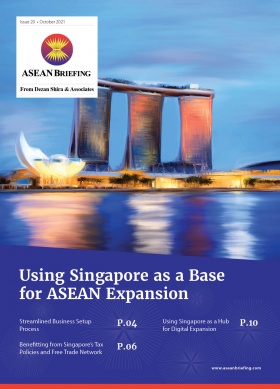The Guide to Company Deregistration in Indonesia
The company dissolution process in Indonesia can be voluntary or non-voluntary. The voluntary dissolution occurs when the owners or investors of the business choose to close the business, due to a variety of reasons from low cash flow to the mismanagement of business operations to excessive company liabilities.
The non-voluntary dissolution of a company is defined under Article 142 of the Company Law of 2007, which include:
- Court decision to liquidate the company in case the company’s assets are insufficient to settle bankruptcy costs;
- Revocation of business license;
- Company dissolution based on a general meeting of shareholders (GMS);
- Dissolution as mentioned in the company’s Articles of Association; or
- Bankruptcy assets of a company declared bankrupt are placed in a state of insolvency.
What are the procedures for closing down a limited liability company?
Dissolution proposal
The first stage of the dissolution of a limited liability company begins by preparing the dissolution proposal. As stated, under voluntary dissolutions, the proposal would be prepared through a GMS meeting. The decision of the GMS will depend on the provisions of the quorum, which are stipulated on the deed of incorporation; usually, the dissolution can be undertaken if three-quarters of the quorum is in the agreement unless stipulated differently in the deed of incorporation.
Under the non-voluntary process, an authority intervention (usually by court order) will initiate the dissolution proposal.
Appointment of a liquidator
The GMS or court order will appoint a liquidator in the next stage of the dissolution process, depending on if the dissolution process was voluntary or non-voluntary.
In most cases, the liquidators are the directors of the company, but some may appoint lawyers from outside the company to act as liquidators to avoid any conflict of interest. The liquidator’s responsibilities include:
- Record and announce the company’s assets;
- Make payments to creditors;
- Make payments of the remaining assets to shareholders;
- Reporting to the tax office so that the company’s tax number can be revoked;
- Announce the planned division of assets in the State Gazette of the Republic of Indonesia; and
- Other actions for the implementation of the settlement of assets.
The final report of the liquidator is then reported to the GMS or the court for approval. Moreover, the aim for publishing the dissolution in the State Gazette is to inform all creditors as well as the Ministry of Law and Human Rights (MLOHR).
The announcement must be published within 30-days after the decision to dissolve the company was taken and the creditors must claim any outstanding debts during the 60-days following the announcement of the dissolution in the State Gazette.The court also has the right to auction the company’s assets to be used to cover any debts held.
Responsibility relief of the liquidator
A third GMS is usually held to relieve the liquidator of their responsibilities. The MOLHR will then announce the termination of the company’s legal status in the State Gazette.
Limited liability companies should also apply to the Investment Coordinating Board to revoke their business license.
What is the time frame for the dissolution of the company?
The dissolution process could take at least 12 months to up to two years from the date of approval of the GMS. This is with the assumption that all rights and obligations of the company to third parties are fulfilled.
Are directors personally liable for company debts?
If the company goes bankrupt due to negligence or error caused by the directors or commissioners, and if the company’s assets are insufficient to pay all the obligations, then each member of the board of directors/commissioners is jointly responsible for any outstanding obligations.
However, if the dissolution of the company was not caused by the negligence of the directors or commissioners, then they are not liable for the company’s debts.
Dissolution of a Representative Office
Unlike a limited liability company, a representative office (RO) does not undergo the process of liquidation and thus closing this entity is a much simpler process.
The Investment Coordinating Board must first be notified of the intention to dissolve the RO so that it can revoke the ROs principal business license. Before the RO can be winded down, the termination of the Domicile Letter must be implemented to inform the government the RO is no longer at the stated business address in Indonesia.The RO must also notify the tax office to delete its tax number, and unless it is officially deleted, the RO must continue to provide tax reports. Even though the RO is not engaged in direct sales and therefore does not generate revenue or profit, it is still a taxable entity in Indonesia and therefore is obligated to report and pay taxes and social security (income tax will be zero).
Further Reading
- How to Set Up a Limited Liability Company in Indonesia
- Indonesia’s Omnibus Law: Individuals Now Allowed to Incorporate Companies
- Indonesia’s Omnibus Law: The Positive Investment List and the Liberalization of Business Sectors
About Us
ASEAN Briefing is produced by Dezan Shira & Associates. The firm assists foreign investors throughout Asia and maintains offices throughout ASEAN, including in Singapore, Hanoi, Ho Chi Minh City, and Da Nang in Vietnam, Munich, and Esen in Germany, Boston, and Salt Lake City in the United States, Milan, Conegliano, and Udine in Italy, in addition to Jakarta, and Batam in Indonesia. We also have partner firms in Malaysia, Bangladesh, the Philippines, and Thailand as well as our practices in China and India. Please contact us at asia@dezshira.com or visit our website at www.dezshira.com.
- Previous Article New Digital Logistics Platform Investments for Singapore
- Next Article Philippines Mom & Pop ‘Sari-Sari’ Retail Attracts US Investment








